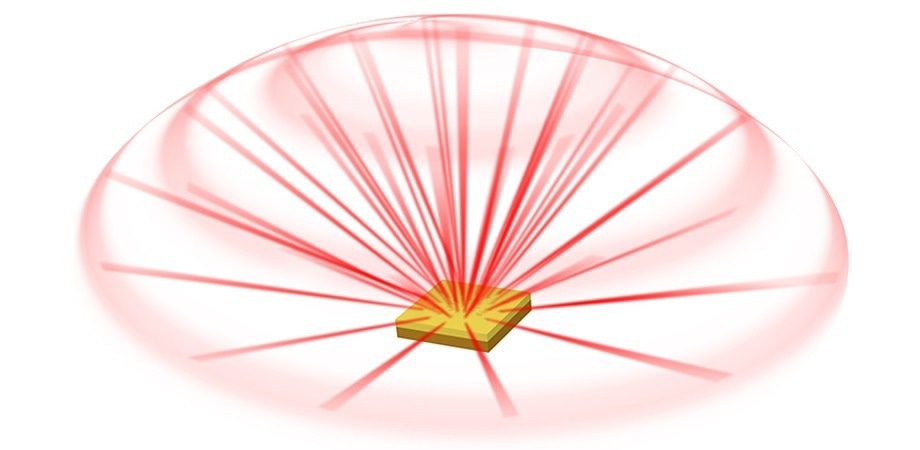Numerous industries, including telecommunications, remote sensing, and even medicine, use lasers. A device or material can produce laser emission, or lasing, in a variety of ways. Consequently, there are many different types of lasers with various operating principles.

Innovative direction-tunable laser design enables beam steerability necessary for lidar applications and 3D sensing. Image Credit: T.C. Lu, National Yang Ming Chiao Tung University
Utilizing “bound states in the continuum” (BICs) is a new and promising way to achieve lasing with high energy efficiency. These states are a continuous spectrum of non-localized (traveling) waves coexisting with highly localized waves that remain in space.
By carefully planning the geometry of a confining periodic structure, BICs can be realized when working with light, an electromagnetic wave.
Although a few different types of BIC-based lasers have already been reported by scientists, the majority of them can only emit a beam in a direction that is perfect or nearly perfectly vertical in relation to the device’s surface. Due to this restriction, such BIC lasers cannot be used in applications where it is necessary to angle the emitted beam.
A research team from Taiwan’s National Yang Ming Chiao Tung University (NYCU) recently developed a new BIC laser device whose lasing direction is simple to tune to address this issue.
Tien-Chang Lu, a Distinguished Professor in the Department of Photonics at NYCU, served as the study’s lead. It was published in the journal Advanced Photonics. According to Lu, the potential application of this new directional laser in lidar systems was one of the driving forces behind the team’s creation of it.
In current lidar techniques, laser light scanning is primarily done using mechanical or microelectromechanical mirrors, which are bulky, expensive, and potentially unreliable in rugged road conditions. Many people are trying hard to build a true solid-state lidar system that can eliminate these mechanical mirrors yet meet the demand for beam-steering capabilities.
Tien-Chang Lu, Distinguished Professor, Department of Photonics, National Yang Ming Chiao Tung University
This requirement for beam steerability is precisely met by the proposed BIC laser design. The team painstakingly created a device geometry that generates Friedrich-Wintgen BIC (FW-BIC) in their work.
This particular type of BIC results from the coupling of two resonance states that are housed in the same cavity and emit light over the same emission channel. These energy states behave as bound states when they are close to the resonance energy but as continuum states when they are far from the resonance energy.
The primary requirement to produce FW-BIC is that the radiation from these resonances interact destructively in the far field (i.e., region outside of the device), ensuring that their energy is unavoidably trapped inside the cavity.
Simply put, an FW-BIC laser device creates the ideal conditions for lasing because the light it contains is strongly confined and experiences very little attenuation over time (indicating a high Q factor).
But how can FW-BIC aid in the creation of a directional laser? The researchers used a one-dimensional suspended high-contrast grating structure that gave rise to FW-BIC to build a laser cavity to answer this question.
They discovered that altering this grating's geometry had an impact on the coupling modes of the FW-BIC, which in turn changed the emitted beam’s direction. This unique property offered a simple method for precisely changing the emission angle.
Lu added, “In our experiments, we could adjust the emission angle over a wide range, specifically from –40° to +40°, which is the largest angle demonstrated experimentally for BIC lasers. This feature also provides greater flexibility and could allow us to design a laser array for multi-angle lasing with a field of view of up to 80°. This would be a desirable feature for solid-state lidar applications.”
The team has high hopes for their suggested beam-steering solution because it modulates the emission angle without the use of any external passive components and thus has a higher power efficiency. The proposed design should lead to the creation of massive, high-resolution laser scanning systems with uses in lidar and three-dimensional sensing.
Journal Reference
Huang, Z.-T., et al. (2022) Tunable lasing direction in one-dimensional suspended high-contrast grating using bound states in the continuum. Advanced Photonics. doi:10.1117/1.AP.4.6.066004.